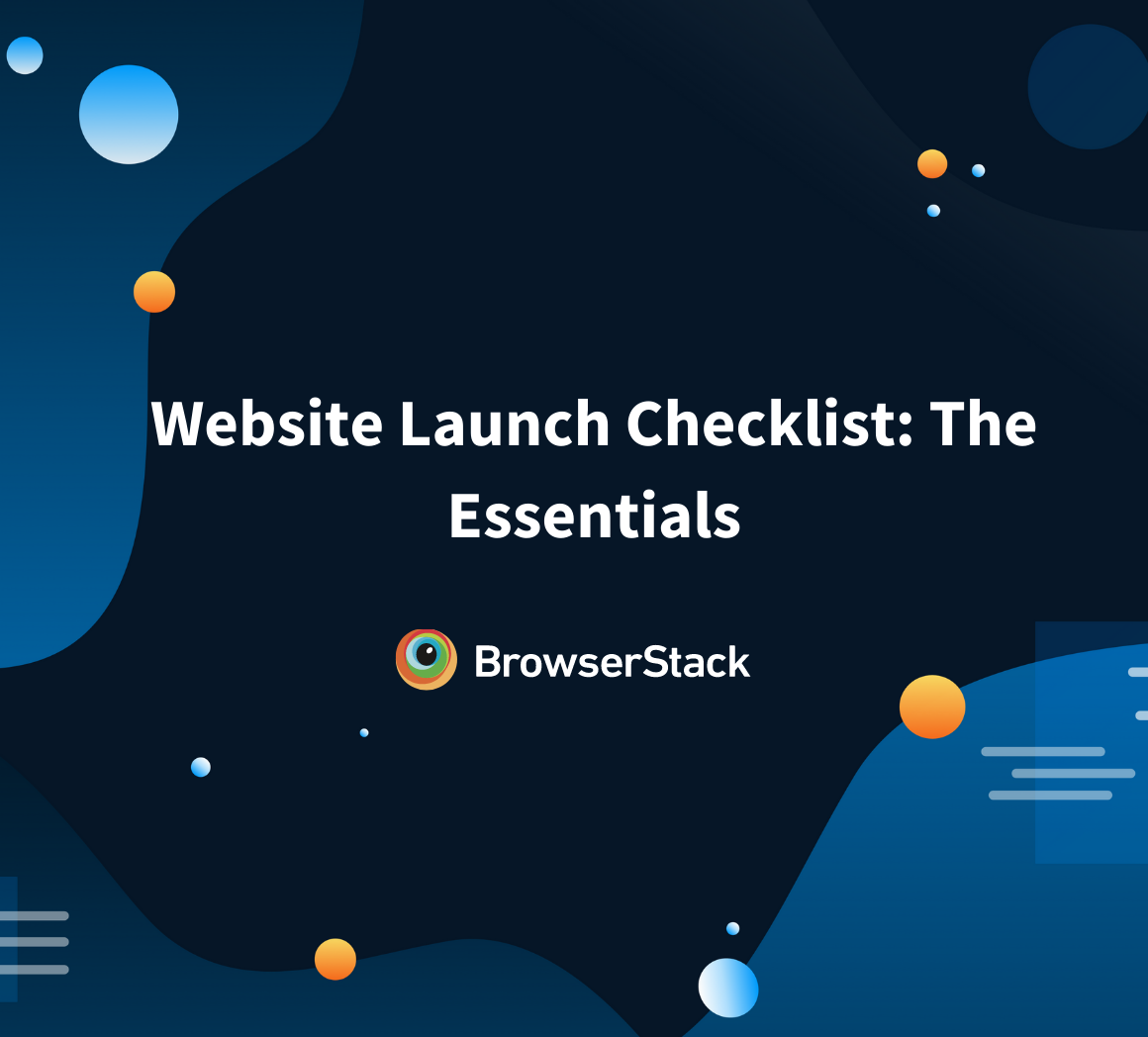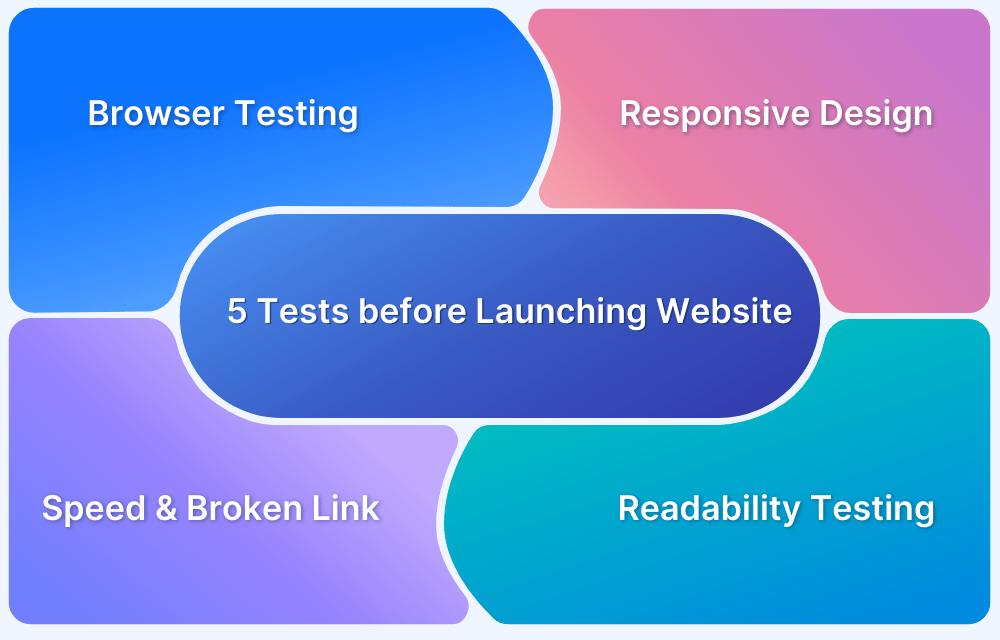A successful product launch demands thorough preparation. A product launch checklist covers all key steps involved.
Overview
Product Launch Checklist:
A product launch checklist covers pre-launch prep, market research, branding, testing, team readiness, launch execution, performance tracking, and post-launch feedback.
Pre-Launch Preparation:
- Know Your Audience: Conduct market research to understand needs and pain points.
- Position & Brand Smartly: Define your value proposition and build compelling messaging.
- Plan Your Launch: Strategise marketing, sales, and distribution channels.
- Test Thoroughly: Ensure product quality and fix issues early.
- Prep Your Team: Train and align teams for a smooth rollout.
- Set Clear Goals: Define measurable, realistic launch objectives.
Launch Day Execution:
- Launch Activities: Roll out your marketing and promotional campaigns according to plan.
- Monitor Performance: Track key metrics and evaluate how the market is reacting.
- Customer Engagement: Actively engage with customers and provide timely support.
Post-Launch Analysis:
- Analyse Results: Review performance to spot what worked and what didn’t.
- Capture Insights: Gather customer feedback to understand their experience.
- Refine & Improve: Use insights to enhance the product and strategy.
This guide gives a comprehensive overview of a Product launch checklist. It also covers key preparations, post-launch analysis, and some best practices.
What is a Product Launch
Product launch is the process where a new product is introduced to the market. This process involves multiple promotional, marketing, and other coordinated activities to create a buzz around the product, entice new customers, and boost sales. A product launch is not just for releasing a new product. Sometimes an update to an existing line of products can also be introduced through these launches.
What is a Product Launch checklist?
A product launch checklist is essential for launching a new product or service. It includes tasks and actions to complete before, during, and after the launch to ensure success and maximum impact. Common elements of a product launch checklist include tasks that vary depending on the product and industry.
12-Step Product Launch Checklist
Here’s a 12-step product launch checklist to successfully launch your new product or product update.
Step 1 – Define Your Audience
- Always lead with what your customer wants.
- Before blueprinting a product, perform thorough market research to identify prospective customer’s pain points.
- Talk to 10 or 15 of your potential user persona groups, and ask what problems they face with their current tools or solutions.
- Get clarity on the exact issues they want to solve in an alternate product.
- Ask precise questions to extract specific answers as there is no such thing as too much data.
If you already have customers in the same domain using different products from your company, prioritize conversations with them. These individuals already value your services and will most likely purchase a new product if it meets their requirements.
Once you have all these vital data points, you can create buyer personas. This requires an in-depth understanding of customers’ requirements and challenges and is arguably one of the most critical steps on any product launch checklist.
Key Takeaway – Data visualization should be central to decisions regarding product design, what features to incorporate, and which areas to invest in. We cannot overstate the importance of this step.
Step 2 – Solidify Brand Positioning
Here’s what your brand positioning statement should be able to answer:
- Who is the product really for?
- What does the product exactly do or solve?
- Why is it different from other similar existing products?
Once you answer these, try diving a tad deeper and answer the following:
- Why is my target audience most likely to buy this product?
- How can I prove that this product is measurably different from its competitors?
- If my product solves multiple problems, which one is the most significant?
Once stakeholders have answered and approved these questions, you’ll know how to discuss your products in all sales and marketing collaterals. This is essential for building brand image and tone while launching a new product.
Follow-Up Read: Syncing Business Analysis, DevOps, and QA
Step 3 – Set Realistic Goals
What results do you want out of your launch? Impression? Engagement (comments, shares)? Increased follower count? More inquiries about your product? Sales and signups?
- Set realistic goals to ensure that you don’t set your team up for failure.
- Success metrics should reveal how well launch campaigns work and offer learnings for future campaigns and customer-facing practices.
Naturally, product launch checklists will start varying from this point on. Purchases will matter to the sales team, while clicks and impressions will matter to marketing.
Key Takeaway – Ensure all stakeholders have studied and approved your success metrics, so everyone knows what success will be based on their team functions.
Step 4 – Test Everything You Can
Before considering a product launch, you must ensure the product is reasonably flawless. You won’t be expected to have every feature integrated and ready for public use, but ensure that the basic functionalities your customer will expect are in place and operating under different real-world conditions.
- Every feature customers intend to use must be sufficiently tested on real browsers, devices, and operating systems.
- Do not trust tests on emulators and simulators because they cannot entirely replicate real user conditions.
- Run your product through a gamut of tests meant for different scenarios.
- Ensure the website or app can operate equally well across devices- browsers-OS combinations.
- Ensure the product is easily accessible and highly operable, irrespective of the user’s location, circumstances, preferences, or technology.
- Consider running tests in low network conditions, accessibility tests, and finally, geolocation testing
With GPS geolocation, you can simulate the exact location of any real device on BrowserStack. The ease and accuracy of geolocation testing capabilities on BrowserStack Real Device Cloud empower your product and QA team to deliver at the speed of agile.
Product launches tend to focus on key market regions and expand as and when they gradually release feature updates and services. This is the smart way to ensure you deliver contextually and regionally accepted content.
Release with confidence, knowing that various location-based user flows will work correctly for customers in your target markets.
Here are a few key resources adjacent to a product launch checklist to get you started:
- Website Design Checklist
- Website UI/UX Checklist
- Web Application Testing Checklist
- Website Launch Checklist
- Website Accessibility Testing Checklist
- Mobile App Testing Checklist
- Mobile App Performance Testing Checklist
- UI Testing Checklist
Step 5 – Ensure Product Branding is On Point
Establishing flawless features of a product is half the battle. First impressions make a huge difference to modern customers because they are spoilt for choice. These key pointers are essential for your product designers.
- The product packaging must also convey the brand identity via design, color, images, illustrations, logos, fonts, and more.
- Pay close attention to the text on the packaging and the product itself.
- Ensure that it offers maximum clarity and avoids ambiguous or controversial phrasing.
- The product must also carry all necessary compliance and regulatory approvals, primarily if it caters to a global customer.
- Ensure your products appear they should online and offline. Real-life vs. smaller screen size viewing can baffle your users.
Follow-Up Read: How To Test Website in Different Screen Sizes
Step 6 – Recheck Logistics
Pre-launch, it is integral to double-check the product deliverability to target areas.
- Verify that there is enough supply to meet projected demand.
- Re-check that distribution channels are open and unhindered by any bottlenecks.
- Whatever your production pipelines, they should match up to sudden demand spikes.
Step 7 – Shape Your Go-to-Market Strategy
Roughly, your go-to-market strategy should include:
- A realistic launch date
- Branding elements to convey the desired impression – font, color, logo, captions
- Marketing avenues & spend budgets – social media, TV & radio advertising, blogs, Google Ads, etc.
- Promotional collaterals like sales decks and brochures
- Press Releases and Media Decks. Reach out to key journalists in the product domain to get the word out.
- The final approved design of the product packaging.
- Changes to the website with relevant updates regarding the new product.
Step 8 – Train Sales and Support Teams
Before amplifying your product release velocity, sales representatives should:
- Be trained to address customers about said product, highlight all its features and demonstrate them as required.
- Have access to updated sales materials about new features, market statistics, and other relevant information.
- Understanding the product’s nuances for helping users across phone calls, video calls, and chat.
- Have requisite technical documents – release notes, technical data sheets, onboarding guides, templates, FAQs – at hand.
Create dedicated channels for user feedback. They should be able to have their grievances heard and addressed as fast as possible, at least within industry-standard timelines.
Industry Study: Overcoming Problems While Developing eCommerce Websites
Step 9 – Finalize Product Documentation
A product launch must be supported by easy-to-comprehend user documentation:
- Installation and onboarding guides, reference documents, maintenance/training manuals, etc.
- Ensure that documentation has been translated into the correct languages for foreign markets.
- A series of quick-start guides should be created and prepared for instant distribution.
- Even video/visual content for those who need in-depth acquaintance with all facets of the product.
Learn More: Core Practices for Visual Testing
Step 10 – Product Launch Day
Launch your product once you have run through all the previous steps in the new product launch checklist. Prepare your team for the pressures of launch day by giving them clear, defined roles, so they are not overwhelmed by the inevitable barrage of customer questions and engagement.
For launch day, consider operating as part of the customer success team where you can personally support new customers. Not only will this make for a better customer experience, but it will also help you get first-person insight into their reactions. It will also show early adopters how valued their opinions are to the company.
Step – 11 Curate a Post Product Launch Marketing Plan
A product launch will need pre-marketing and planning to create a buzz around it. However, it is equally important to have a post-launch marketing plan to maintain this buzz and promote it to drive sales.
Here’s how you can facilitate your post-product launch marketing plan:
- Have a meeting with your team and discuss the learnings from the product launch.
- Survey the product launch attendees and users to know how your product fares and how to proceed.
- Send out emails to leads informing them about your successful product launch
- Gather testimonials from happy customers
- Use a product analytics tool to analyze in-app user activities.
Based on the above learnings, tweak your post-product-launch marketing plan
Step 12 – Evaluate Results
You should have metrics to assess the launch day’s success. Check which metrics denote success and which do not. For example, you generated as much awareness as you wanted, but initial sales were low. Once you know which goals were unmet, you can regroup and use the learnings to rework the product launch plan checklist for future releases.
Detailed Study: Ensuring an Efficient Software Quality Process
Stages of Product Launch
Here are the different stages of a product launch
- Discovering and Analyzing Customer Needs: The first step is to ensure that your product addresses your target customer’s pain points and requirements. Use surveys, CRM data, etc., to identify their issues, potential solutions, and requirements specifically.
- Competition Analysis: Analyze your competitors to understand what works and what does not work for them. This insight will help you shape your product’s unique value and curate an efficient marketing strategy.
- Prototype, Test, and Improve: Develop a prototype of your product, test it internally and then conduct beta tests with a small section of your audience. Gather their feedback to enhance your product.
- Analyze the Costs: Study the costs, profit margins, and sales forecasts to evaluate if your product is financially feasible and make modifications accordingly.
- Plan Pre- and Post-Launch Marketing: Build a marketing strategy that involves influencers in your niche, PR, partnerships, and other traditional and digital marketing strategies to create a buzz around your product before launch and maintain momentum after launch.
- Assess your Supply Chain: Assess your supply chain and check if it can meet the demands of your target audience. If the demand exceeds expectations, feasible strategies can be created to scale up.
- Launch: Release your product to the public by making sure all aspects have been addressed and covered.
- Gather Feedback: Gather and analyze feedback from the public after the product launch to understand how it fared and identify areas for improvement.
Importance of a Product Launch Checklist
A product launch checklist is essential for several reasons:
- Organization and Team coordination
- Comprehensive Planning & Decision Making
- Risk Mitigation
- Consistency and Quality assurance
- Time Management and Resource Allocation
- Documentation and Learning
The above-listed factors can also answer the question – “What can happen if you don’t use a Product Launch Checklist?” as in if you don’t adhere to specific self-imposed guidelines and rules, your SDLC can go off track.
Product Launch Examples
Here are a few product launch examples:
1. HubSpot Operations Hub
HubSpot launched Operations Hub as part of its CRM platform in 2021. This solution effectively addressed the common challenge of duplicative work due to departmental silos. Therefore, the product became a quick success.
2. Calm
Calm is an app for meditation, sleep, and mindfulness that was launched as a website in 2011. Due to its efficient product that addressed customer pain points and strong digital marketing strategies Calm became an instant hit with the customers.
Best Practices for Product Launch
Here are the best practices to follow for your product launch:
- Study your Audience Well: This might sound like the most obvious practice, yet brands fail to analyze their target audience deeply. You must go beyond basic demographics to create a truly valuable product for them. The product should address every section and subsection of your audience, their painpoints and requirements.
- Generate Hype Early On: To generate buzz around your product, share teasers, exclusive previews, and intriguing social media posts well before launch.
- Create a Multi-Channel Marketing Strategy: Leverage various marketing channels like social media, email, influencer partnerships and PR to reach your target audience at multiple touchpoints. Consistent messaging through multiple marketing channels expands the visibility of your product.
- Focus on Continuous Improvement: Collect feedback after launch to identify and understand the strong points, and areas for improvement and build strong customer relationships.
- Test Your Product Thoroughly: Test your product across various devices and browsers via real-device and cross-browser testing to ensure it works consistently across different real-user conditions and environments. This should not be a one-time process. Make sure you carry out testing whenever the product is updated.
Conclusion
A product launch is undoubtedly one of the most important events in any company. Every product represents (or ideally should) the company’s best foot forward. Enhance the efforts of your engineers, developers, product managers, & marketers with this actionable product launch checklist & key takeaways.
When adhered to, the steps above should give a solid foundation for any product release. Since most product launches require noticeable financial investment, it is best to incorporate as many best practices as possible. Start with this article, and do industry-specific research to get the best out of your spending on product launch efforts.
Whether your product is a multi-experience app or a stand-alone website, always get it BrowserStack approved before a public release. Why?
A few reasons why your product team should consider BrowserStack infrastructure:
- Cross-Compatibility: BrowserStack’s Live real-device cloud platform allows you to test your app on a wide range of devices and operating systems to ensure a seamless user experience all across every possible device browser OS combination.
- Seamless User Experience: With such a wide range of test environments, you can recreate real user scenarios and device experiences.
- Consistent User Experience: With the automated visual testing tool Percy, you can automatically validate changes at the UI level across a range of devices.
- Managing App Versions: BrowserStack provides a platform that allows you to easily manage different versions of your app, ensuring that all of them are adequately tested.
And that’s just for starters. Get onboarded to BrowserStack so you and your team can rest easy on product launch days.
Frequently Added Questions
1. What are the 4 Ps of product launch?
The 4 Ps of a product launch are the foundational elements like Product, Price, Place, and Promotion.
- Product should ensure it meets customer requirements
- Price should balance profitability with customer expectations
- Place refers to product distribution channels
- Promotion is all about creating awareness and buzz around the product.









